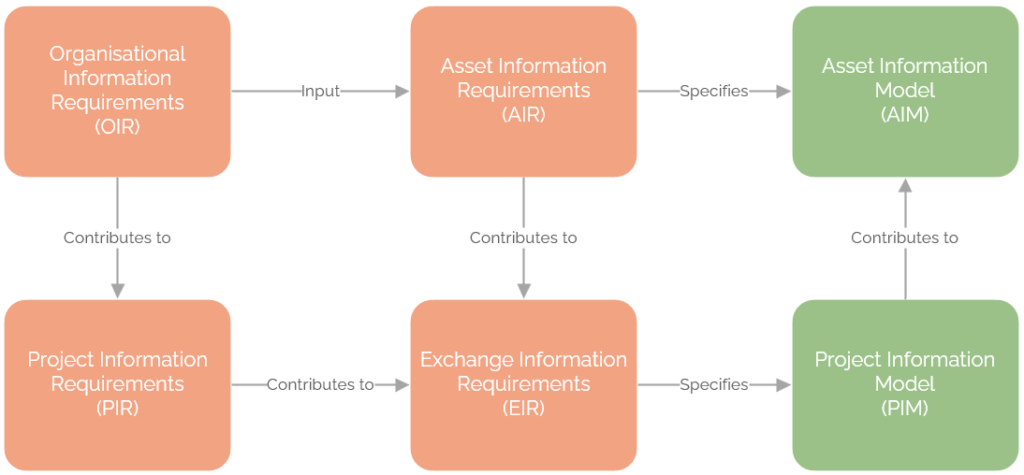Just like Crocs or Carhartt, digital twins are all the rage right now, offering a new way to simulate, monitor, and optimise physical assets. But here’s the catch: not every client needs—or even wants—a digital twin. There’s a lot of buzz around digital twins, but the key is to align these powerful tools with what the client actually needs, not just what sounds impressive.
So, what exactly is a digital twin? While digital twins can be many different things, think of it as a virtual replica of a physical asset. It could be anything from a building to a piece of machinery. This virtual model is fed real-time data from the physical world, allowing you to simulate performance, predict outcomes, and optimize operations. Digital twins can revolutionize asset management, offering benefits like predictive maintenance, improved performance, process optimization, risk management, and better resource allocation. They integrate seamlessly with existing asset management systems, pulling in data from various sources to provide a comprehensive view of your assets.
EIRs and BEPs Are Critical
A solid plan is essential for a digital twin project to succeed. This is where the Exchange Information Requirements (EIR) and BIM Execution Plan (BEP) come in.
Exchange Information Requirement (EIR)
The Employer’s Information Requirements (EIR) is an important document that outlines various aspects of a project’s information management. While originally named “Employer’s Information Requirements” in PAS1192, the terminology changes to the “Exchange Information Requirements” in ISO19650 as an EIR can (and should) be produced by any party needing information during a project.
When delivering a digital twin, the client’s EIR is key. It defines the exchange of information between parties, articulating information needs and expectations.
The EIR should address things such as:
- Data exchange requirements, such as any required workflows, software and communication platforms, what file formats are required for the target system, (eg, IFC, JSON, CSV) and the structure and format of the contents of those files
- Asset information requirements, such as data required by the digital twin and the specific format of the data point. For example, an asset code could be defined as XXX-YYY-0000, or there could be a requirement for a particular coding system, such as Uniclass, Omniclass, Vbis or others. The data format should also be identified, such as strings, integers and other specifics about the format such as character limits. If you’re looking at the IoT side, these data requirements could be the specific format of the output JSON file accepted by the digital twin. These requirements could also be contained within a separate Asset Information Requirements (AIR) document; however, in ISO19650, the OIR informs the AIR, which informs the EIR.
- Information and data management requirements, such as storage solutions, real-time data capture expectations, data collection protocols, monitoring, metrics and insights. The EIR may also cover requirements related to maintenance strategies that cover the procedures around asset health, maintenance schedules and repair histories.
- Security-related items, especially if you’re operating the digital twin on the client’s behalf, the EIR should request information about security measures, such as data encryption and access controls that protect sensitive information, and how you, as the digital twin operator, will ensure compliance with regulatory standards and maintain the integrity of data in both the physical and virtual environment.
Ultimately, a good EIR from a facility owner’s perspective should consider information requirements from inception to decommissioning, maintaining the information’s value and utility throughout the asset’s lifespan.

BIM Execution Plan (BEP)
For a digital twin project to succeed, you need to respond to the EIR and to do that you need a solid plan. This is where the BIM Execution Plan (BEP) comes in. You might know the BEP as a Digital Engineering Execution Plan (DEXP) or maybe a Digital Engineering Management Plan (DEMP). Still, whatever name yours goes by, it is an important document that outlines how Building Information Modeling (BIM) will be implemented throughout the project, especially in the context of creating a digital twin.
Key components of the BEP include:
- High-level details about the project and the delivery team.
- An overview of how the project team will meet the EIR requirements.
- Processes for effective teamwork and communication.
- Procedures, validation methods, and control measures to ensure data accuracy and reliability for the digital twin.
- A detailed timeline with milestones, deliverables, and resources required for implementing the digital twin.
- Specifying training needs and support services for stakeholders to effectively use and maintain digital twins.
The BEP ensures all team members understand their roles and that the data produced will meet the digital twin’s needs as outlined in the EIR. With these documents, project teams can ensure that their digital twin implementation aligns with client needs, meets regulatory requirements, and delivers maximum value throughout the asset’s lifecycle.
Managing Client Expectations
Effectively managing client expectations is crucial for successful digital twin implementations. This involves clear communication from the start about the digital twin’s capabilities and limitations, as well as establishing open, transparent channels for discussion. Regular reviews and feedback sessions using an iterative development approach help align client input with progress, refining the digital twin to better meet their needs.

Education is another key factor, providing clients with materials, case studies, and demonstrations to understand digital twins’ functionalities and benefits. Clearly defining project scope, objectives, and success criteria in collaboration with clients ensures expectations are set around deliverables and value-add.
However, it’s equally important for the team pitching to the client to be well-educated on the technology. A team that has “googled some stuff and watched some YouTube videos” usually isn’t equipped to effectively communicate the value of digital twins. They risk providing inaccurate information, lacking credibility, and failing to address client concerns adequately. Additionally, if they’re overly enthusiastic about digital twins, they might promise to deliver unrealistic aspirations. A well-educated team with the appropriate subject matter experts in the room can accurately convey the technology’s capabilities, tailor solutions to specific client needs, and identify value-add opportunities.
This dual focus on education – for both clients and sales teams – ensures that expectations are realistic and aligned with what digital twins can deliver. Clearly defining project scope, objectives, and success criteria in collaboration with knowledgeable clients and informed sales teams sets the stage for successful digital twin implementations.
Looking Ahead
So, we’ve laid the groundwork for understanding digital twins and their implementation in asset management, particularly focusing on Exchange Information Requirements (EIRs) and BIM Execution Plans (BEPs) in setting clear expectations and defining information needs throughout a project’s lifecycle.
The importance of clear communication between all project stakeholders – from clients to designers, constructors, and asset managers, cannot be understated. While the planning process can be complex, we can go a long way to solving these issues with well-defined asset information requirements, lifecycle information management, and integration with existing systems.
However, this is just the beginning of the digital twin journey, there’s still much to explore in the world of digital twins.






No Comments